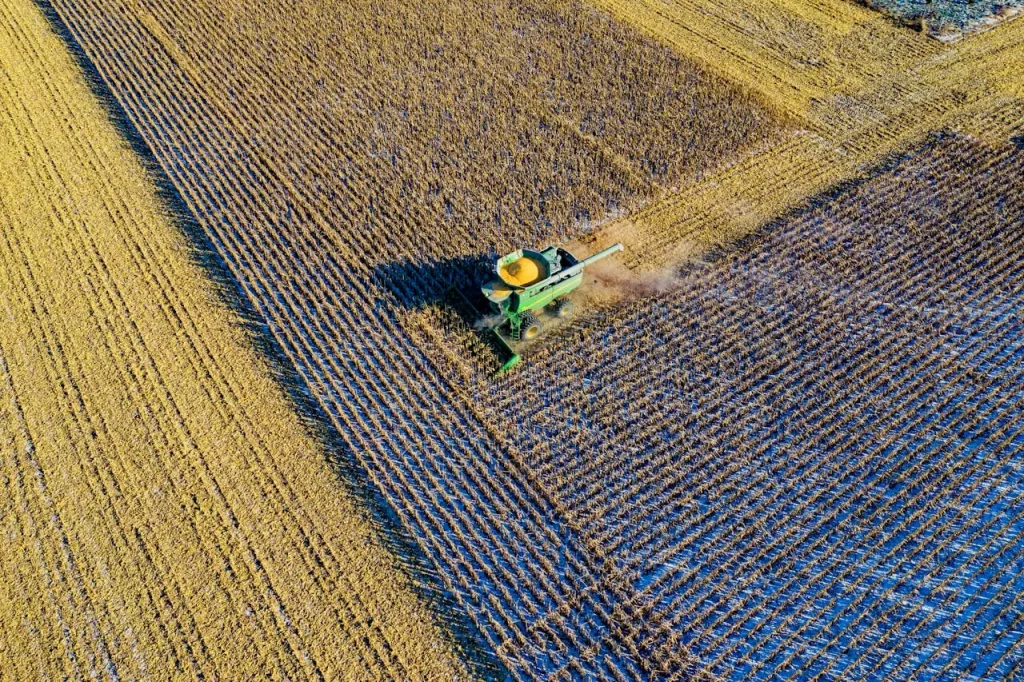Introduction
June 2025 — In recent years, the idea of precision agriculture has become a beacon of promise within the agricultural community, exciting growers and technology innovators alike. At its core, precision agriculture suggests farming practices meticulously refined by advanced technologies, enabling farmers to optimize resources, maximize yields, and reduce environmental impacts. The appeal is compelling — offering visions of farms operating with surgical precision, guided by data that eliminates waste and uncertainty. Yet, to truly harness the potential of precision agriculture, we must first take a step back and temper our expectations. Our intent with this blog isn’t to diminish the vision of precision agriculture; instead, it’s to foster clarity, realism, and optimism to motivate farmers and ag-tech developers to continue pursuing the notion of precision on a global scale. As Will Rogers once said, “the farmer has to be an optimist or he wouldn’t still be a farmer”.
The Hype and Reality of Precision Agriculture
Like many innovative eras, precision agriculture has faced the double-edged sword of hype. Marketing campaigns and media portrayals have led many to believe that precision agriculture is not merely possible but already perfectly achieved. You’ve likely noticed similar narratives surrounding the world of artificial intelligence recently — headlines asserting AI’s omnipresence and omnipotence abilities when, in reality, we’ve only had a glimpse of its true potential.
Precision agriculture largely mirrors this scenario. The concept is often oversimplified and overhyped. The reality is that precision farming, while undeniably promising, remains constrained by the intricate and inherently variable nature of biological systems.
Accuracy vs. Precision | Clarifying Misconceptions
Understanding the difference between accuracy and precision is fundamental to moderating our expectations. Accuracy refers to how closely measurements or observations reflect the true state of something. Precision, meanwhile, relates to the consistency and repeatability of those measurements. Consider insect monitoring: accurately counting pests in a field provides actionable information. However, expecting precise control over biological variables like weather conditions or pest behavior is far less realistic.
Precision agriculture’s strength today lies in accuracy. Technology exists that reliably and accurately monitors critical agricultural parameters. FarmSense’s FlightSensor, for example, showcases this potential through accurate, real-time insect monitoring, providing growers essential data to respond swiftly to pest pressures, enhancing crop health and yield.
The Uncontrollable Variables of Farming
Precision agriculture faces limitations due to three major uncontrollable factors: biological variability, weather unpredictability, and human decision-making. Each farm faces unique ecological challenges, weather events defy precise forecasting, and a farmer’s actions remain influenced by personal experience, intuition, and external factors.
For instance, vertical farming is a recent example of society trying to achieve absolute precision through environmental control, aiming to eliminate uncontrollable variables. However, the complexities inherent in biological systems and unforeseen operational challenges have proven to be substantial barriers. Despite significant investments and aspirations, vertical farming’s efforts to eliminate variability have proven to be more complex and less economically viable than anticipated, further shedding light on the intrinsic unpredictability of agriculture.
Realistic Expectations and Practical Goals
Precision agriculture, rather than being an absolute destination, should be seen as an evolving journey. The genuine aim is enhancing accuracy and responsiveness progressively — not achieving perfection. Focusing on responsiveness in real-time is a practical, achievable, and beneficial goal. Technologies — even some available today — are enabling swift, informed decisions to significantly improve farm outcomes.
This isn’t to say that the existing technology existing in commercial agriculture isn’t advanced, in fact, that’s far from the case as advancements in agricultural technology have rapidly accelerated over the past decade. Real-time insect monitoring is an example of this realistic pursuit. This technology provides commercial growers accurate, timely insect population data, enabling proactive and informed pest management decisions. This type of accurate and actionable insight can significantly improve resource efficiency and yield quality, while practically contributing to the overarching goal of precision agriculture.
The Takeaway | A Patient Path to True Precision Agriculture
“It is only the farmer who faithfully plants seeds in the Spring, who reaps a harvest in the Autumn.” — B.C. Forbes
Precision agriculture, though filled with promise and potential, is not yet fully realized. It remains an aspirational journey, guiding agricultural innovation rather than defining its current state. As with farming itself — where success demands patience, careful planning, and measured actions — so too must our approach to precision agriculture reflect the type of thoughtful planning and persistence as B.C. Forbes alluded to.
The allure of precision agriculture promises a world where uncertainty retreats and clarity flourishes. Yet, we must acknowledge the fact that we’re only standing at the dawn of genuinely precise agriculture. It is also important that we not lose sight of the fact that precision should be coupled with resilience, seeing as how nature itself is not precise, but instead dynamic. This translates to the need for farmers to position themselves to be responsive as well. Embracing this journey means understanding that precision is not our current state but our guiding star — a goal that innovative technologies steadily move closer to, step by measured step.
Acknowledging this truth empowers farmers and technology developers to set realistic, practical goals, enabling true innovation and incremental precision improvements with every passing season. By aligning expectations with reality, we pave the path towards a future where farming fulfills its promise of unprecedented precision — one harvest at a time.
